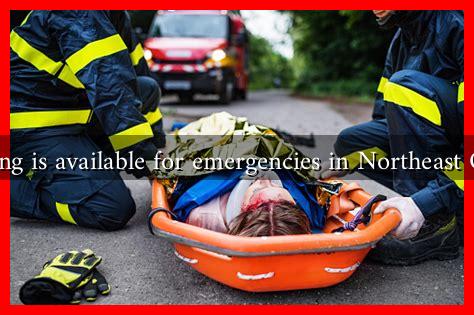-
Table of Contents
- What Training is Available for Emergencies in Northeast Ohio Today?
- The Importance of Emergency Training
- Types of Emergency Training Available
- 1. CPR and First Aid Training
- 2. Disaster Preparedness Training
- 3. Active Shooter Response Training
- 4. Community Emergency Response Team (CERT) Training
- Case Studies and Success Stories
- Conclusion
What Training is Available for Emergencies in Northeast Ohio Today?
In a world where emergencies can strike at any moment, being prepared is crucial.
. Northeast Ohio offers a variety of training programs designed to equip individuals and organizations with the skills necessary to respond effectively in emergencies. This article explores the available training options, their importance, and how they can make a difference in crisis situations.
The Importance of Emergency Training
Emergency training is essential for several reasons:
- Preparedness: Training helps individuals and organizations prepare for various emergencies, from natural disasters to medical crises.
- Response Efficiency: Well-trained individuals can respond more quickly and effectively, potentially saving lives.
- Community Resilience: Training fosters a culture of preparedness within communities, making them more resilient in the face of disasters.
According to the Federal Emergency Management Agency (FEMA), communities that engage in regular emergency training are better equipped to handle crises, reducing the overall impact on public safety and health.
Types of Emergency Training Available
Northeast Ohio offers a range of emergency training programs tailored to different needs. Here are some of the most prominent options:
1. CPR and First Aid Training
Cardiopulmonary resuscitation (CPR) and first aid training are fundamental skills that everyone should possess. Organizations like the American Red Cross and local hospitals offer courses that cover:
- Basic CPR techniques for adults, children, and infants
- Use of automated external defibrillators (AEDs)
- First aid for common injuries and emergencies
These courses often include hands-on practice and certification, ensuring participants are well-prepared to act in emergencies.
2. Disaster Preparedness Training
Local agencies, including the Cuyahoga County Office of Emergency Management, provide disaster preparedness training. This training typically covers:
- Creating emergency plans for families and businesses
- Understanding local hazards and risks
- Developing communication strategies during emergencies
Such training is vital for ensuring that individuals and families know how to respond during disasters like floods, tornadoes, or severe winter storms.
3. Active Shooter Response Training
In light of increasing incidents of gun violence, many organizations offer active shooter response training. This training focuses on:
- Recognizing the signs of potential violence
- Developing escape plans and lockdown procedures
- Understanding how to respond if confronted with an active shooter
Local law enforcement agencies often collaborate with schools and businesses to provide this critical training.
4. Community Emergency Response Team (CERT) Training
The CERT program trains volunteers to assist in their communities during emergencies. Participants learn:
- Basic disaster response skills
- Fire safety and suppression
- Search and rescue techniques
CERT training empowers community members to take an active role in emergency response, enhancing overall community resilience.
Case Studies and Success Stories
Several communities in Northeast Ohio have successfully implemented emergency training programs, leading to improved preparedness and response. For instance, during the 2020 COVID-19 pandemic, trained volunteers from local CERT teams played a crucial role in distributing food and supplies to vulnerable populations. Their training allowed them to operate efficiently and safely, demonstrating the value of preparedness.
Conclusion
Emergency training is a vital component of community safety and resilience in Northeast Ohio. With various programs available, from CPR and first aid to disaster preparedness and active shooter response, individuals and organizations can equip themselves with the skills necessary to respond effectively in emergencies. By investing in training, communities can enhance their preparedness, ultimately saving lives and reducing the impact of crises.
For more information on emergency training programs in Northeast Ohio, consider visiting the American Red Cross or your local emergency management office.





